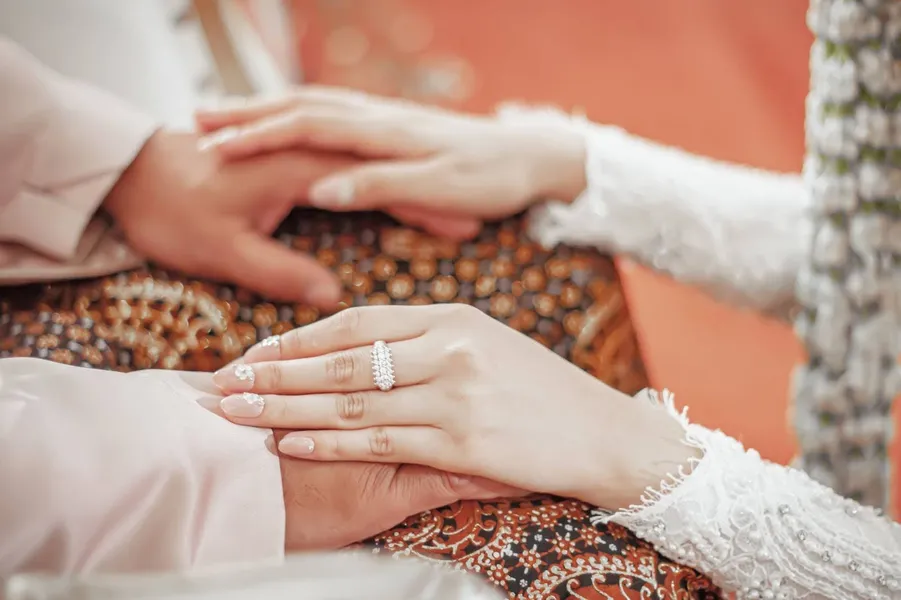Batik in traditional Javanese wedding ceremonies has an irreplaceable place. From royal to modern times, people have used batik in various traditional Javanese wedding ceremonies. This is related to the symbols and meanings contained in batik for people’s lives.
These symbols and meanings are maintained and preserved. The following is the meaning of batik symbolism in weddings.
Batik for The Bride and Groom

The groom and bride in Java, in particular, must wear special batik, which is full of messages and life advice.
1. Sido Mulyo
Wearing this pattern is a symbolic act that wishes the bride and groom a happy, rich, honorable life filled with plenty of wealth.
2. Sido Luhur
The pattern comes from the Surakarta Palace. The nobility conveyed in this pattern is meaningful in terms of material and non-material aspects, where the bride and groom can live in prosperity and with nobility of mind, actions, and words.
3. Sido Asih
On the evening of the wedding celebration, the bride also dons this batik pattern. This pattern symbolizes the idea that love will always be abundant in the bride and groom’s home.
4. Sido Mukti
The bride and groom usually wear this pattern at weddings. This symbolizes achieving prosperity in the lives of the bride and groom and a promising future.
5. Sido Wirasat
This batik pattern has the meaning of advice given by parents to guide the bride and groom in entering the ark of domestic life. This pattern usually pairs with the truntum batik motif.
Batik for The Bride and Groom’s Parents

Not only the bride and groom, the bride’s parents also wear batik, which is also full of symbols and philosophy.
1. Truntum
It comes from the word truntum, which means to guide. Sometimes, it is also associated with the word tranquil, which means calm. The parents of the bride and groom use this pattern so that parents can guide and set an example for their sons and daughters in entering household life.
The truntum pattern also symbolizes love because, according to the story, this truntum pattern was made by the empress of PakuBuwono III, Queen Kencono, when she was missing her king. From this story, many people also say that truntum batik symbolizes the queen’s love for the king.
2. Grompol
In Javanese, it means united. This pattern is usually worn during wedding ceremonies. This pattern symbolizes the hope that when the sons and daughters have married, all good things, such as fortune, happiness, harmony, and tranquility, will gather as one in their second home.
Apart from that, this pattern also conveys that the new pair of father and mother, no matter how far they leave their parents, will still return and remember their family.
Now, you know about Batik symbolism in weddings, especially in Javanese weddings.
